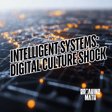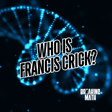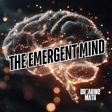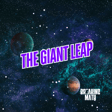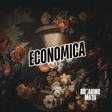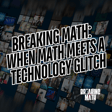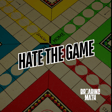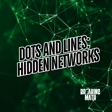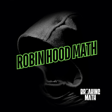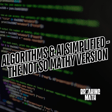Become a Creator today!Start creating today - Share your story with the world!
Start for free
00:00:00
00:00:01

93. The 10,000 Year Problem (feat. David Gibson of Ray Kitty Creation Workship)
Summary: The episode discusses the 10,000 year dilemma, which is a thought experiment on how to deal with nuclear waste in the future. Today's episode is hosted by guest host David Gibson, who is the founder of the Ray Kitty Creation Workshop. (Find out more about the Ray Kitty Creation Workshop by clicking here).
Gabriel and Autumn are out this week, but will be returning in short order with 3 separate interviews with authors of some fantastic popular science and math books including:
- The Gravity of Math: How Geometry Rules the Universe by Dr. Shing-Tung Yau and Steve Nadis. This book is all about the history of our understanding of gravity from the theories of Isaac Newton to Albert Einstein and beyond, including gravitational waves, black holes, as well as some of the current uncertainties regarding a precise definition of mass. On sale now!
- EVERYTHING IS PREDICTABLE: How Bayesian Statistics Explain Our World by Tom Chivers. Published by Simon and Schuster. This book explains the importance of Baye's Theorem in helping us to understand why highly accurate screening tests can lead to false positives, a phenomenon we saw during the Covid-19 pandemic; How a failure to account for Bayes’ Theorem has put innocent people in jail; How military strategists using the theorem can predict where an enemy will strike next, and how Baye's Theorem is helping us to understang machine learning processes - a critical skillset to have in the 21st century.
Available 05/07/2024 - A CITY ON MARS: Can we settle space, should we settle space, and have we really thought this through? by authors Dr. Kelly and Zach Weinersmith. Zach Weinersmith is the artist and creator of the famous cartoon strip Saturday Morning Breaking Cereal!
We've got a lot of great episodes coming up! Stay tuned.
Transcript
Introduction to the 10,000-Year Problem
00:00:00
Speaker
Hello, everyone. This is Gabe, your humble host of the Breaking Math podcast. Autumn and I are actually out this week, but we have a wonderful guest host for today's episode who's doing a wonderful discussion on something called the 10,000-year problem. That is, how do we communicate the dangers of nuclear waste stored in places where it might not be discovered by civilizations until far in the future, let's say 10,000 years? It's a fascinating discussion. This is a time where we can't assume that they still speak English or that they might understand our symbols for dangers.
00:00:29
Speaker
Our guest host today is Mr. David Gibson, who is the CEO of a science communication channel called Ray Kitty Creation Workshop, and it's actually named after this problem as well. So more on him in just a bit, but first I've got some amazing announcements.
Science Book Announcements
00:00:44
Speaker
Who enjoys reading books about science? Our podcast has been sent a couple of books recently, actually four or five books, and we have been given the opportunity to read through the books ourselves and interview the
00:00:57
Speaker
the authors of the books before or you know soon after the books have been released. I want to tell you a little bit about these books. The first one is called Gravity of Math. How Geometry Rules the Universe. This book is published by Basic Books of New York. This is a book specifically about math and gravity. It's everything from Isaac Newton's description of gravity to Einstein to gravitational waves and more.
00:01:21
Speaker
Now, it's written by two people. One of them is named Professor Xing-Tun Yao. He's one of the authors, and he is furthering the development of these theories and especially how they pertain to uncertainties regarding the actual meaning of mass. I mention this because here on the Breaking Math Podcast, we've covered Einstein's theory a few times now, but this is
00:01:41
Speaker
brand new information. This is brand new information. This is specifically about how there are just some some ambiguities and some uncertainties about how mass is defined. So we'll see how that pans out in the book. The other author is Steve Natiss. He is a contributing editor to Discover magazine and a contributing writer to Quanta, one of my favorite magazines.
00:02:03
Speaker
and he lives in Cambridge, Massachusetts. Now, I will be interviewing Mr. Natas on this podcast, so please send me your questions. Also, we sell a gorgeous poster on the mathematics of tensor calculus, which is the math used to describe Einstein's general theory of relativity. We've got examples of that on our website at breakingmath.io. Also, if you're interested in getting a copy, just send us an email at breakingmathpodcast.gmail.com. Now, the next book, this is an interesting one.
00:02:31
Speaker
The next book is a little bit about Bayes' theorem. Now, whenever I bring that up, you know, I have gotten a reaction that, you know, oh, I don't like statistics. Oh, that's a field that I have. I don't understand it all. Well, this book brings a very important part of statistics to the layman, specifically a field where things like false positives are understood and people who are falsely imprisoned can use Bayes' theorem.
00:02:58
Speaker
to prove their innocence. Also, this book describes how this theorem can be used to understand algorithms for chat GPT and other forms of AI which are growing in the workplace. Also, how military strategists can use the theorem to predict where the enemy will strike
Challenges of Mars Settlement
00:03:14
Speaker
next
00:03:14
Speaker
It's a very interesting book, and I highly recommend everyone check it out. The book is called Everything is Predictable, How Bays and Statistics Explains Our World, and it's on sale starting May 7th of this year. I will include a link to where you can buy it in the show notes. It's written by Tom Shivers. That's Tom.
00:03:30
Speaker
C-H-I-V-E-R-S, and he is an award-winning science writer for Semaphore, which is an international news outlet that you also check out. His writings also appeared in everything from the Times of London, of course, The Guardian, New Scientist, Wired, CNN, and more. He has other books including Everything is Predictable, The Rationalist's Guide to the Galaxy, and also How to Read Numbers. This is a
00:03:54
Speaker
conversation I look forward to having. I think understanding Bayes' theorem would be really important for everybody, especially anyone who you might someday need to understand that for any reason, for understanding false positives in medicine or for legal reasons or more. The last book is a
00:04:10
Speaker
fascinating one. It's called A City on Mars. Can we settle space? Should we settle space? And have we really thought this through? And it has cartoons all throughout it. This is a book that was released a while back on November 7th, but it's out now. And again, as I said, it's got science and it's got cartoons and deep questions. It's published by Random Penguin House. I'm sorry, I mean Penguin Random House. Now that Penguin Books and Random House have joined, they are Penguin Random House.
00:04:37
Speaker
and the authors are Dr. Kelly and Zach Wienersmith. Where have you heard that name? Wienersmith before. There is a comic strip called Saturday Morning Breakfast cereal. I'm sorry, Saturday Morning Breakfast cartoons. I'm gonna have to search that up and correct me.
00:04:52
Speaker
on this announcement. He's a famous cartoonist who has a hilarious cartoon called Saturday Morning Breakfast Cereal. We'll call it that. And he goes back a long time. That's a hilarious cartoon. They both wrote a book that explores some of the challenges with trying to settle Mars. And they try to answer that question in deep detail, everything from what would the human body go through in trying to settle Mars, to what would reproduction be like, to what would
00:05:22
Speaker
politics and law and governance and other things be like for the first settlers of Mars. And it's a fascinating reading that challenges the reader to really consider these topics carefully. So goodness, yeah, that's three books that we've got that'll be happening soon.
Math-themed Cruise Plans
00:05:40
Speaker
Now, where are Autumn and I going?
00:05:43
Speaker
We are actually off to a math cruise. It's just like a regular cruise. But instead of things like water slides and magic shows and rock climbing, it's a lot of math. A lot of folks doing math. Totally fun. It really is. So I hope you have a fabulous podcast and experience with David Gibson. And please check out his show. Again, it's the Ray Kitty Creation Workshop. Give him a follow and we will see you guys next week.
Managing Nuclear Waste Over Millennia
00:06:23
Speaker
Hello and welcome to the Breaking Math Podcast. I'm David Gibson as Gabe and Autumn are off on a tangent solving problem somewhere. They asked me to sit in today. I, as background, am not a mathematician. I am actually not all that great at math. To be quite honest, I teach science.
00:06:47
Speaker
in science there is so much math and they are so ingrained and part of each other that it was very cool for them to ask me on and to ask me to help out in co-hosting or guest hosting this podcast so
00:07:02
Speaker
Today, we are going to be talking a little bit about science. We're going to be talking a little bit about math. We're going to be talking a little bit about history. And I teach, as I said, science. I run the Ray Kitty Creation Workshop. I even have a show here in the wonderful Studio 519 with the awesome folks here. And it is called the Ray Kitty Science Project, not to be plugging everything there.
00:07:30
Speaker
So science is my passion but Gabe asked that I talk about something that I'm passionate about and So this will have math in it. I know you tuned in for the math So there is math in this one here and we are going to talk about what is called the 10,000 year Dilemma, okay, so the 10,000 year dilemma is
00:07:53
Speaker
a way in a thought project or a thought experiment on how to deal with nuclear waste in the future.
Communicating Danger with Semiotics
00:08:06
Speaker
Now, nuclear waste is something that we are getting from nuclear research. We're getting it from medical facilities.
00:08:14
Speaker
We're getting it from nuclear energy or power generation. And so this waste that is developed there has to go somewhere. The 10,000-year dilemma is talking about, okay, this waste right now, some of this waste is pretty toxic. If we were to talk about plutonium-239, for instance, which is one of the isotopes that's readily used and normally used,
00:08:42
Speaker
in some of our nuclear reactors, the waste, the plutonium-239 that they have has a very long half-life. The half-life is 24,100 plus years. So that means that that plutonium
00:09:02
Speaker
is not gone in 24,000 years. That means it's reached its first half-life. Now that half-life is when half or approximately half of those isotopes have decayed. Now they may decay into and do decay into other toxic
00:09:23
Speaker
isotopes, but we're just talking the plutonium 24,000 years for the half light. Now, if you had a five kilogram little mass of plutonium 239, which would be pretty small, it's a very dense, dense material, that five kilogram
00:09:43
Speaker
mass would have the number of isotopes in there would be 12.5 times 10 to the 24th power. This is a math one. You can do the math on that one. That's a lot of zeros.
00:09:59
Speaker
There's that many isotopes in this that are toxic isotopes, that are radioactive isotopes. The half-life in 24,100 years, you would still have, here's a little bit more mass, 6.25 to the 10th, and then you can figure that one out.
00:10:16
Speaker
So you've got a lot of this radioactive material that you're storing for a very long, long time. And so in the future, the 10,000 year dilemma is deciding how do we tell future generations, future civilizations, future cultures that this is something dangerous. Now,
00:10:39
Speaker
you may think, okay, well, what if we erect these huge monoliths and things like that? How well did that work for the pyramids? Okay, now the pyramids were meant to keep people out. And so what did people do? They went in, right? They went in and they ransacked and they pillaged and they stole and they took all of these things away from it. And so
00:11:05
Speaker
The danger in having these beautiful monoliths and things like that is that it can be inviting, right? It can say, hey, there's something here. Come check it out. Now, 10,000 years into the future, you say, well, why don't you just put a big old do not touch sign on there? Now, there's a problem with that.
00:11:24
Speaker
And that is the semiotics of our language, the semiotics of our signs. Now, when I say the word semiotics, that is the study of signs, the study of language, and how they're interpreted.
Critique of Universal Danger Symbols
00:11:39
Speaker
And we have a semiotics even in math. The symbols that we use today, if you look at Roman numerals, really about the only place you're going to see Roman numerals is knowing what Super Bowl we're watching. Roman numerals are not used very regularly, but we do. And I have an image there.
00:12:00
Speaker
and the image is of a tablet that was used in Babylon and this is actually showing the square root of 2. Now if I were to look at this tablet here
00:12:16
Speaker
I would see a bunch of nicks in it and it looks like maybe somebody tried to ice skate on it or something like that because I see a rock with a bunch of nicks in it. Now someone who can read this this cuneiform would say oh well this is actually the
00:12:34
Speaker
approximate square root of 2. And as we can see on there, we have our Pythagorean theorem on there. We have our isosceles triangle. So there's a lot of math that's on this little rock here. Now, of course, the numbers that are on there are notation. Those are not actually the numbers that were found on it. And that's the point. OK, so on this image, what we're seeing is this is how they used to represent the symbols for math.
00:13:02
Speaker
Now, this is on the sexagesimal system, which is that number of 600, those kind of things. If we look at the next little image here, it actually shows that the images for the sexagesimal system itself wouldn't even make much sense if we were to look at those today.
00:13:21
Speaker
OK, so those images that represent 11060 and then go up by your sixes wouldn't even really make sense in our the way that we're looking at math today. OK, so the sex adjustable system is a system that is not used as often in mathematics anymore. And these are symbols that are no longer really used in math anymore. So this is very important because when we're saying, hey, I want to notate, do not touch,
00:13:51
Speaker
Just like mathematics, our symbols for everything else have changed dramatically and drastically. And I want to actually read a little note here that was written because when they were going through this thought project, they talked to scientists, they talked to archaeologists, they talked to
00:14:13
Speaker
philosophers, they talked to all kinds of people in all kinds of fields because it was very important that they're able to use this note for future generations, and they asked Carl Sagan. Right now, Carl Sagan is kind of my generation's Neil deGrasse Tyson, right? He was actually
00:14:33
Speaker
the predecessor to Neil deGrasse Tyson, if you talk about Cosmos and those kind of things. So they asked Carl Sagan, they said, well, what symbol would you use? Now, this was a little bit later in his life. He was he was ill, so he wasn't able to actively participate in the project. But these were his words. He says.
00:14:49
Speaker
What we need is a symbol that will be understandable not just to the most educated and scientifically literate members of the population, but anyone who might come upon this repository. There is one such symbol, so here we go, he must have fixed it, used on the lintels of cannibal dwellings, the flags of pirates, the insignia of SS divisions, and motorcycle gangs. And the key is the skull and crossbones.
00:15:15
Speaker
So Carl Sagan said, hey, let's put a skull and crossbones on it. No one will ever mess with it. Now, as we can see here on this cute little puppy, nowadays the skull and crossbones does not have the gravitas that it once had.
00:15:31
Speaker
We see skull and crossbones on beanie hats. We see it on t-shirts, on socks, on little t-shirts on our puppies. So it's not this heavy symbol that would say, don't mess with it. In fact, it may say, hey, here's something cool. Come check it out. So even though we use it on poison and it is a symbol that is still used to represent something dangerous, it also represents exactly how dangerous this cute little puppy can be.
00:15:59
Speaker
When we are talking about the skull and crossbones, I thought I would check a little bit into the semiotics and how has the skull and crossbones, just as that singular symbol, how has that changed? Now, the skull and crossbones actually started out as a templar symbol, okay? So the templars used it, and what we know about the templars, they were, slash, are, you know, depending on your Illuminati feelings there, but no, the templars were,
00:16:29
Speaker
very cryptic they used a lot of Hidden meanings and hidden messages as well as symbols and they were also pirates. So yes They were all of these wonderful things So where did this symbol come from and how did it enter into our Templar mythology? And it was a story the story was in the Templar Holy Blood and the Holy Grail. Okay, and so
00:16:57
Speaker
The story was that a great lady of Maraclea was in love and loved by a Templar Lord of Sidon. So the Lord of Sidon loved this lady and she died very young. So he actually went into the tomb and being still in love with her carried on. You can do the math on that one as to where that went. Well,
00:17:26
Speaker
A voice came to him and the voice from the void told him to return in nine months and he could retrieve his son. So the voice from the void said nine months, come back and retrieve your son. So nine months later, sure enough, he goes over to this tomb. He opens up the tomb and what does he find? In this tomb, he finds a skull.
00:17:51
Speaker
lying on the crossed leg bones of a skeleton, the skull and crossbones. That was what he found in the tomb that he had opened from his, some say, wife. And so when he found this, he's of course distraught, but the voice came back and the voice said, guard it well,
00:18:16
Speaker
for it would be the giver of all good things. Okay, so the origination of the skull and crossbones is that it is the giver of all good things. It was to be used as his genius, as his guide, as his
00:18:34
Speaker
Forerunner so this skull and crossbones was going to make his journeys his conquest profitable It was a mark of good fortune So right off the bat the skull and crossbones was used by the Templars as a mark of good fortune now Here's a little bit of semiotics and human
00:18:56
Speaker
kind of viewpoints there. If I were to be a Templar and I were to be sailing a boat toward your country, toward your boat, and I had my wonderful giver of all good things with me, and I had that sailing on the mast, so I had this huge flag with a skull and crossbones that was my forerunner and that meant good fortune for me.
00:19:25
Speaker
What does that mean for you? Ah, so the Templars being somewhat pirates, if you were on the other side of the boat looking at that, all of a sudden that is a message or a sign or a symbol of warning, okay? So this went in just this very short period of time from something that was a forerunner, meaning the bearer of all good things,
00:19:54
Speaker
to a warning. So now the skull and crossbones is a warning.
00:20:00
Speaker
So this warning as it continues through the ages, as we see now, is now just something that you put to say, hey, I'm maybe edgy or that I enjoy these kind of fun, dark things. So it lost a lot just in that short period of time.
Evolving Language and Warnings
00:20:23
Speaker
So the symbol for the skull and crossbones, that's out.
00:20:27
Speaker
So Carl Sagan, even being the mind that he was, didn't take into account how things can change. So in the kind of idea of things changing as far as symbols, as far as semiotics, as far as language changing,
00:20:45
Speaker
Maybe they put up that big sign that says, do not touch. Or Sandia National Labs actually had a wonderful ominous saying that they wanted to put on there. And that was, I'll read it to you here because I wanna get these words right. This place is not a place of honor. No highly esteemed local, or no, let me start with that one over again. Here we go, let's try this again. This place is not a place of honor.
00:21:14
Speaker
No highly esteemed deed is commemorated here. Nothing valued is here. Now that is ominous. Were I to read that, I would say, okay, this is not really something that I want to or even need to mess with. The problem is
00:21:31
Speaker
That's still written word. The idea was to write it in every known language. Well, that's great. But language also changes. Language also adapts.
00:21:46
Speaker
When we're looking at language, I, as I said, I teach science. I have in-person classrooms, meaning I deal with teenagers. And so you know where I'm going to go with this. Teenagers, in addition to scaring the living out of me, are
00:22:06
Speaker
also a great adapter of language. Okay, so we have new words that now if you look on the internet, you'll see the jokes about folks my age not understanding the words of teenagers nowadays and the words have changed a lot. Also, what about the very secret cryptic code that my mom and grandma used to write in called cursed?
00:22:32
Speaker
OK, if I had a note in cursive to one of my students, they're going to look at that. They are going to have no idea what that says. So even just in the generation from, say, my parents generation to my children's generation, cursive is already something that is a lost language for the most part, a dead
Creative Communication Solutions
00:22:54
Speaker
language. So writing these words on something
00:22:57
Speaker
is also not going to quite get the point across. So symbols, if we were to look at a culture that if it were to just freeze frame the United States right where we are right now, and a culture 10,000 years from now, if they knew nothing about us, were to say, okay, well, let's investigate the United States. Let's see what we can learn about these guys. They would think
00:23:21
Speaker
Okay, judging from what they would come across, these are some things that they may think that possibly we worshiped bats and spiders and that we received our nutrients from a small plastic six inch box in our hands because
00:23:38
Speaker
Everyone had these small boxes, so they must be important to life. And we were all wearing shirts with a spider emblazoned on it or a bat emblazoned on it. We had small idols that were Batman and Spider-Man and Superman. So these must have been the icons or the gods of our era. And so you can see how this could be misconstrued very easily.
00:24:06
Speaker
And so they came up with some ideas to perpetuate the idea that these things that are buried here are in fact dangerous. Now, some of them were pretty crazy ideas. Some of them were pretty outlandish. They had a, if you could shoot some...
00:24:31
Speaker
They called it a moon into space, right? Some satellites into space that would continually broadcast, hey, this is a dangerous area. And there's some issues with that. How would you continue to get reception from that if the culture didn't have something that was tuned with frequency? So there's some problems with that. They also said, okay, well,
00:24:55
Speaker
What if we raised up a priesthood of the atomic or nuclear danger, right? So because stories, stories stick around a lot longer than our images, than our, you know, maybe not the images themselves, but then our understanding of the images. So if we were to start this atomic priesthood, then they could be a lineage that would always tell people not to mess around with radioactive waste.
00:25:25
Speaker
Well, that has also got some, you know, errors to it and some issues with it. So there was another idea that they came up with, and that is where I am kind of the most interested in. As I said earlier, the name of my business is called the Ray Kitty Creation Workshop. Now, that is also the name of my cat at home. His name is Ray. And that's where this next crazy idea that they came up with comes into play.
00:25:55
Speaker
They called it the ray cat solution. And what it was, was it was an idea that we will genetically modify cats to where they will change color when exposed to the right amount of radiation, like this little guy here. They will change color when they're exposed to the right amount of radiation or the right strength of radiation. And so,
00:26:23
Speaker
That's only half of the story. In addition to getting these genetically modified cats, what we're going to have to do is we are going to have to ingrain into society and into our culture that when these cats change colors, it is in fact something dangerous. So the reason we would want these cats to change colors is to show, hey, you're in an area where there's high radiation,
00:26:53
Speaker
Get away from there now stories as we were talking with the knighthood. I mean with the priesthood the stories Are a way that has been historically And even in the name historically Have been passed down even though they're always a game of telephone where the story changes a little bit there's the the
00:27:19
Speaker
hero and the villain and things like that that kind of stick around in the story and elements of the story that stick. Now, why did they choose cats? Cats have been cohabitating with humans for the longest as far as
Raycat Solution Explained
00:27:35
Speaker
we know.
00:27:35
Speaker
If you look into Babylonia and Egyptian and all of these ancient cultures, we see cats. Okay, so we see them in their imagery. It's already part of the culture. All we would have to do is ingrain it in a way that it would stick. Now, one way that you can make something like that stick would be to interject what is called the 10,000 year earworm.
00:28:00
Speaker
And this earworm is a song, and we'll play it in just a second here. And the 10,000-year earworm is a song by Emperor X, and he made this song as kind of a fun way, but he had heard about the concept, and he talks about color-changing cats in a way that is a nice little jingle. So let's hear the song, the 10,000-year earworm.
00:28:29
Speaker
And then we'll talk a little bit about what we're hearing in that song.
00:28:57
Speaker
Don't change colors with steep dirt color, I'll keep your fun befall. Don't change colors with steep dirt color, cuz we need your tying around. Made a true changer, let's start bringing you with us out of town.
00:29:11
Speaker
Don't change colors cause you get good colors if you know how I don't know why. Don't change colors cause you get good colors. God said it's not right now. So don't change colors or flash your eyes. What colors if you do? I hope you think it's cozy in your travel case. Cause it's time to boom. Don't change colors cause you keep your colors every day like the night black. Right if you actually never change it by a killer and a fight.
00:29:39
Speaker
radiation, whatever that is, is something people don't want. Because if withers in our crocs and it burns on our skin, and it turns our lives high, don't say, oh, change call alert. Kitty, don't flash your eyes, turn on change spell. But if kitty, don't flash your eyes, they all change down a little word.
00:29:59
Speaker
So that's an awesome little ditty, just a fun way. But the idea was that an earworm is something that sticks with you, right? So we would have to not only genetically engineer these cats to change colors, we would also have to ingrain that into culture to where we knew that that color changing kitty was a problem.
00:30:22
Speaker
And so these were just kind of some fun ideas that they had come up with. And some of them, you know, you say, OK, well, we probably shouldn't genetically modify cats. If you look on the Internet, we already have glowing cats. It's true. They work the same as they do with the tiny little glow fish. We do have some glowing cats that you can find on the Internet.
00:30:46
Speaker
Another fun kind of place where they actually use that song is there's a video. If you're interested in the Raycat solution in particular, there's a good video. It is free access and it is from Aeon videos and is called the Raycat solution. You can look that one up. It's a short, I believe 15 minute video. It's very well done, but it talks a little bit more about the scientists and the human interface task force.
00:31:16
Speaker
which is no, it was a real thing. And it talks a little bit about them and how they develop the ideas, you know, like to put satellites in space and to to have these color changing cats. Okay. So
00:31:32
Speaker
What we see here is that through time our semiotics in math as well as science can change. And so we need a way of warning the future generations. And what I like about that, because as I said, I named my business, I named my cat the Ray Kitty, you know, Ray Kitty project. I didn't name my cat the Ray Kitty project. I named my cat Ray because he's a cat.
00:31:59
Speaker
and my business, the Ray Kitty Project or Science, Creation Science. Ray Kitty, yeah. Anyway, I named my business Ray Kitty because the idea that we as humans completely understand science and we completely understand math is just so far-fetched, right? It's as far-fetched as a color-changing cat.
00:32:27
Speaker
The idea that we can grasp everything there is to grasp about math and that the way that we think math is now will be the exact same way math is in 10,000 years. The things we think about science will be the same in 10,000 years. I mean, it wasn't long ago that we believed in humors, you know, the black flam and things like that, that were what changed our mood and our disposition.
00:32:56
Speaker
and the cuneiform as we saw in math. These things are now in the past. Now science and math, what I like about this Ray Kitty solution, science and math, the facts do not change.
00:33:13
Speaker
But what's interesting and so appealing to me about that, that Ray Kitty solution is that even though the facts don't change, what changes is our interpretation of the facts, our knowledge of the facts.
00:33:29
Speaker
and that can and will and should change as we progress. We should know more about math in 10,000 years. We should know more about science in 10,000 years and that is what
Conclusion on Science's Role in Society
00:33:45
Speaker
kind of with this rate kitty project and the 10,000 year dilemma. That's what is appealing to me. And so I wanted to kind of bring that to you guys in this this math podcast. Now, I know the the entire thing was not wrapped around math today, but I do appreciate Gabe and Autumn being able to kind of
00:34:10
Speaker
Stretch out a little bit and say hey Because math is incorporated into all of these other subjects and topics Let's bring them in and have them be part of the discussion. So as I Mr. Dave when I'm working with the rakiti science project as I usually always end mine One thank you for tuning in to the breaking math podcast and as I always
00:34:38
Speaker
And my media, don't forget that science and math shows you matter.
